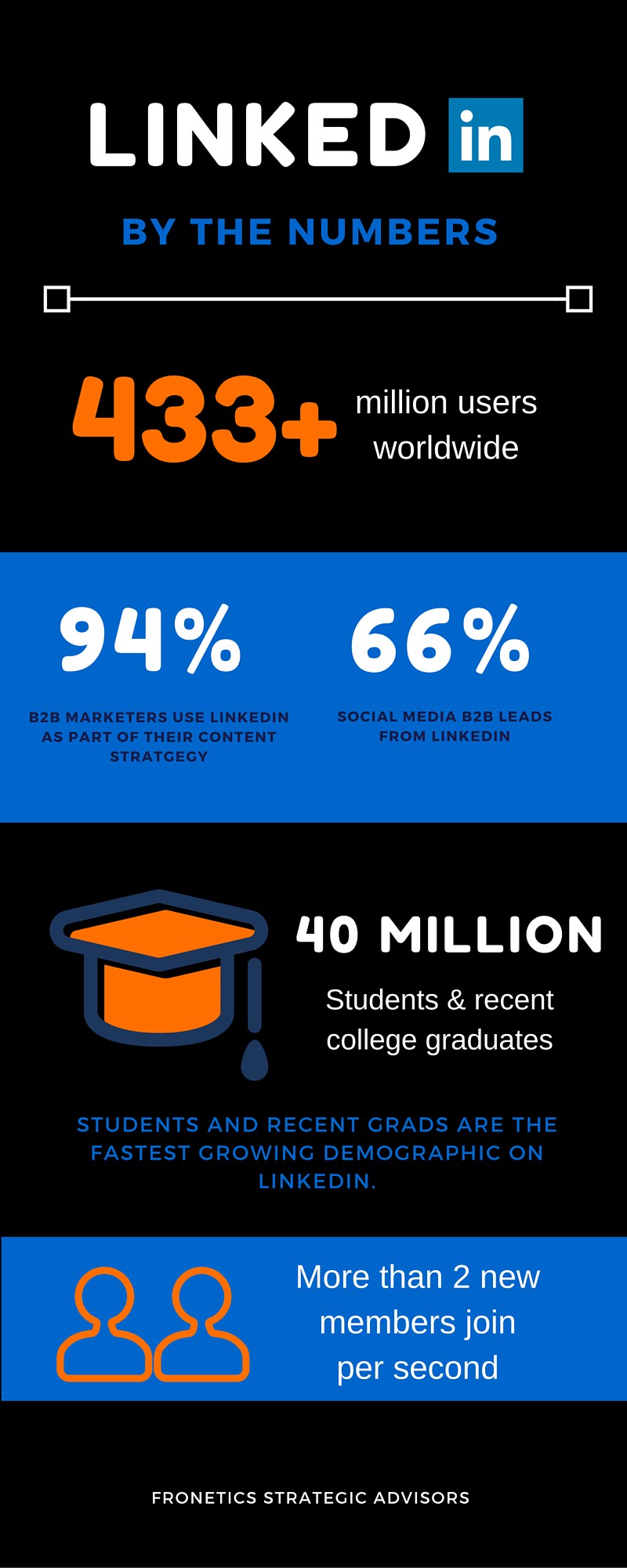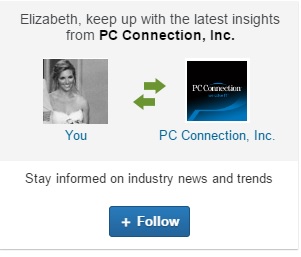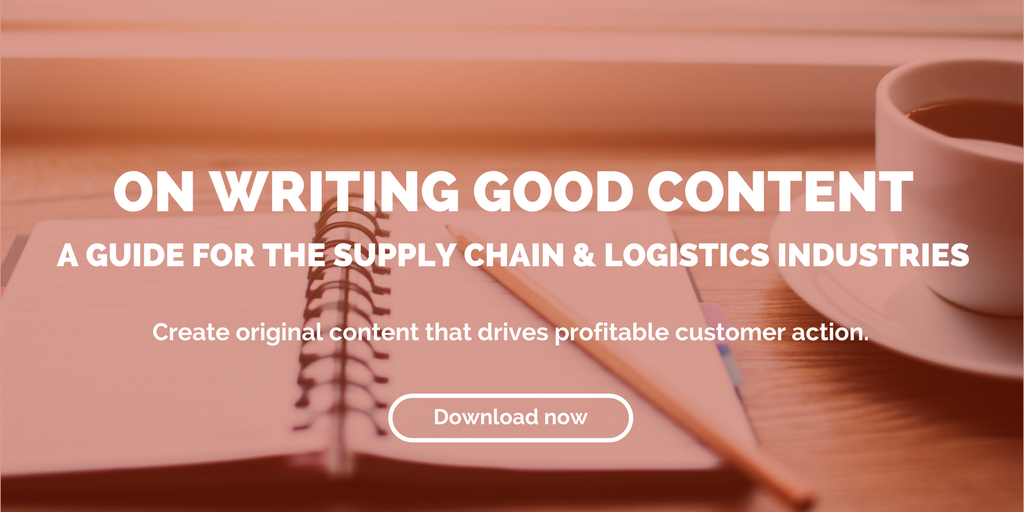
by Fronetics | Jun 8, 2016 | Blog, Marketing, Social Media, Strategy
This is part one of a three-part series on LinkedIn for B2B. See part two, How to Hire Talent through LinkedIn, and part three, 10 Ways to Gain LinkedIn Followers.
LinkedIn is the most popular social network for B2B companies. Here’s what you need to know to get started.
 Chances are your business is on LinkedIn. B2B companies overwhelmingly report it as the most important social network to their business. But there’s a big difference between being on LinkedIn and being active on LinkedIn — and the latter can have a big impact on your bottom line.
Chances are your business is on LinkedIn. B2B companies overwhelmingly report it as the most important social network to their business. But there’s a big difference between being on LinkedIn and being active on LinkedIn — and the latter can have a big impact on your bottom line.
LinkedIn has grown to be much more than a professional networking site. Leveraging all of its functions can help you generate leads, recruit premium talent, and establish your business as a trusted source of knowledge in your industry.
Here is a basic overview of LinkedIn for those businesses who are looking to optimize their presence on this most popular B2B social networking platform.
What is LinkedIn?
LinkedIn is a business-oriented social networking site with more than 433 million users in over 200 countries. It was launched in 2003, and was purchased by Microsoft in June 2016.
Individual users can create profiles highlighting their skills and employment history and “connect” with others. They can also:
- Search and apply for jobs
- Ask for introductions to people in their contacts’ networks (called second- and third-degree connections)
- Endorse connections for their skills and write them recommendations
- Follow companies and Influencers to receive updates on their activities
- See who has viewed their profile
- Share content and updates
- Like, comment on, and share other users’ content and updates
- Send private messages to other users
LinkedIn is free to join, but there are also several subscription options for job seekers, recruiters, marketers, and sellers that offer premium benefits and solutions.
LinkedIn for B2B employers
Businesses can create profiles on LinkedIn, as well as share content, make connections, and see analytics detailing who engages with their company. Getting set up is a little different from creating an individual profile, however. Here’s what you need to know.
The company page
Employers can create a company page. Company pages have four main sections.
- Home: displays the business overview, updates/shared content, friends and colleagues connected to the business, Showcase pages, and links to other affiliated company pages
- Careers (paid subscription required): facilitates interactions with job seekers
- Analytics: provides metrics and identifies trends on your updates, followers, and visitors
- Notifications: offers a daily overview of the updates and page performance
For tips on optimizing your company page, check out our free resource, A Visual Guide to Creating the Perfect LinkedIn Company Page.
Gaining followers
Once a business has a company page, employees can add it to their personal profiles, indicating that they work there (or have in the past). By doing so, they automatically become followers of the company and will receive its updates in their newsfeeds. When they follow the business or like, comment on, or share its content, all of their followers see this action, motivating others to do the same.
Users can also find and follow your company by typing in the business name in the search box at the top of the website.
Companies can help attract their target audience to follow them by using Follow Ads. Follow Ads appear throughout LinkedIn and can be targeted to users in specific industries, companies, and regions. They invite users to click the “Follow” button and join your page. Here is what it looks like:

There are other types of ads designed to attract followers and drive users to your company page. Learn more on LinkedIn Ads.
Other features to know
Groups
Groups connect users from across LinkedIn with common interests and provide forums for related discussion. While company pages cannot join groups or participate in group discussions, individual members can share your company content in these forums. Your employees who launch, administer, and participate in groups related to your business or industry can help get your business name and content in front of like-minded professionals this way.
If you manage a group related to your business or industry, you can also feature it on your company page — up to three groups per company page or two groups per showcase page. Note that you would have to be the company page administrator and a member of the group you would like to add.
Showcase pages
Showcase pages are subunits of a company page that highlight a brand, business unit, or initiative within your business. If you have multiple business units, for example, users can choose to follow the showcase pages of just those that interest them. Your business can tailor the content and messages you share on each showcase page to better engage the demographic specific to that segment. The idea is to help businesses segment their audiences so they can build long-term relationships through content distribution. Read more about showcase pages.
LinkedIn Pulse
LinkedIn Pulse is the network’s publishing platform. Users can write blog posts to publish on Pulse by choosing “Pulse” under the “Interests” dropdown menu, or by choosing “Publish a post” from the homepage. There’s no limit on word count, and you can upload rich media like photos, videos, tweets, podcasts, and presentations to supplement your post.
Posts published to Pulse are search-engine friendly, and authors’ networks receive notification when they publish. While you can’t post on Pulse as a company page, you can post content from employee authors on your company page.
Influencers
Launched in 2012, the Influencers program encompasses less than 1,000 of the world’s top business leaders, thinkers, and innovators who contribute regular content on Pulse. Bill Gates, Arianna Huffington, and Richard Branson are a few examples. A team of LinkedIn editors select Influencers and work with them to create content around issues and topics on which they can provide a unique perspective as leaders in their industries and geographies.
Related posts:

by Fronetics | Jun 7, 2016 | Blog, Marketing, Social Media, Strategy

A cross-departmental social strategy can help facilitate company collaboration.
In your company, social media should be everybody’s business. It is time for your social strategy to include broader collaboration, breaking down your company’s silos. Here is why:
Though marketing departments like to keep tight control over access to social media, doing this can cost you. Such isolation can impact:
- Brand awareness
- The quality and diversity of your content
- Overall customer engagement on social media
- Customer satisfaction and trust
- Insight into industry trends, so you stay ahead of the competition
The truth is, social media is bigger than just the marketing department. It can help gain insight into what customers need, generate sales leads, answer questions, and distribute valuable information to consumers. It impacts many different aspects of your business, so it makes sense to tap into departmental intelligence throughout the company.
Allowing access to the right people, across multiple departments, could actually facilitate the ultimate company collaboration. Your business can realize the full potential of social media use, and your customers get better service.
Tearing Down the Silos
Often a company has several silos in place: sales, customer service, new product development, and marketing are just a few examples. Historically these departments do not work together, and the sharing of information is rare.
But the digital age has changed the way business is conducted. Consumers are not only buying online, they are researching before they buy and asking questions about products or services through social media channels. In fact, one study found that social media is asserting itself as the primary customer communication channel.
Response time is also a factor to consider. One Harvard Business Review report found that the number of customers who expect a response through social media has doubled since 2013, yet seven out of eight messages to companies go unanswered for 72 hours. Why? Because the marketing department often needs to obtain answers from other departments in order to respond.
If you are ready to tear down those company silos, here is how you begin:
- Define goals and identify who will be on your new social media team. Who is knowledgeable, articulate, and can handle social media needs within each department?
- Assign social responsibilities to key individuals throughout your company, perhaps one assigned person per department. This can be effective and make one-on-one customer engagement manageable.
- Clearly define the roles and responsibilities for customer service, public relations, marketing, sales, management, etc.
- Marketing professionals are not typically trained to answer questions or complaints about service or product issues. Since the customer service department may need to handle several questions through social media channels, consider assigning more than one person within this department to provide a timely response.
- Tap into knowledge from all departments to generate ideas, information, and data for informative, fresh content creation.
- Keep your brand voice consistent by crafting guidelines for the style and tone for all social media interactions. Compiling a list of dos and don’ts is always helpful so everyone knows how to respond in difficult situations.
Today’s consumers are on social media and ready to engage. The question is, do you have a cross-departmental team ready to respond quickly and work collaboratively to meet their needs?
Related posts:


by Fronetics | Jun 6, 2016 | Blog, Content Marketing, Marketing, Strategy

Trying to pass your sales pitch off as content will only hurt your content marketing efforts.
Think your blog is a refreshing new way to highlight your products or services? Do your posts include verbiage like “one-stop-shopping,” “innovative,” or “industry leader?” Stop right there. Everyone you reach probably knows right away that you are trying to sell them something, and they will quickly move on.
As counterintuitive as it may sound, being “salesy” will make potential customers look elsewhere, or run in the opposite direction — perhaps to your competition. The best way to win customers is to stop boasting about yourself and to stop trying to sell. Content that answers your customer’s needs is what will grow your business.
Nobody welcomes a sales pitch
Admit it: you tune out anyone that comes across as trying to sell you something. You get emails, voicemails, and social media updates with “information” that is really a not-so-cleverly disguised sales pitch. What do you do? Most likely you hit delete, or you do not read past the first sign of a sales promotion.
So you know deep down that “salesy” does not sell. Yet, according to a recent study of 500 global marketers from the Economist Group, many B2B content marketing programs are doing just that: promoting products throughout their content efforts. In fact, 93% of the marketers surveyed said they directly connect content to a specific product or service.
Customers see right through this trick. The same study found the majority of B2B customers are annoyed by pitches. In fact, 71% of B2B executives reported that content they didn’t like seemed more like a sales pitch than valuable information.
Focus on your customers to increase sales
So what should you content be doing? Rather than forcing your products on your prospective customers, take time to answer their questions. Be the expert advice they are seeking. You do this by:
- Keeping content informative and educational. Your content should hold value for your readers.
- Letting your content demonstrate market expertise. It should give the reader a favorable impression of you and your business. They should walk away thinking that you know what you are talking about.
- Write as if you are speaking to a business peer. You are approachable and intelligent. Speak the language of the customer, and bring something new to the table, in terms of information.
- Focus on topics and questions of crucial importance to your target audience. What do they care about or want to know more about?
The philosophy of content marketing is to offer help, to educate, and, at times, to entertain your target audience. This is accomplished by focusing on the customers’ needs and interests, not your company’s latest product. When you form this online relationship with your audience, you gain their trust and respect, and that is what brings in sales.
Related posts:


by Fronetics | May 25, 2016 | Blog, Content Marketing, Marketing, Strategy

Fronetics’ eBook lays out how to create a content marketing strategy that drives profitable customer action.
We hear it time and again: Clients want to participate in content marketing but are having trouble making it work for them. In fact, 70% of B2B marketers report their content marketing efforts are not successful.
The research is clear on why that is the case. Companies who have a documented content marketing strategy report significantly greater success than those without a strategy or those with an undocumented strategy. Yet only 32% of B2B marketers have a documented strategy in place.
Fronetics’ latest eBook directly addresses this concern. 12 Elements of an Effective Content Marketing Strategy is a resource for companies who want to launch a content marketing program that works — and for those who want their existing programs to achieve better results. The eBook offers a 12-step guide to creating a documented strategy that will be effective for your business. You will learn:
- How your business can benefit from content marketing
- The basic elements you need to create an effective content marketing strategy
- How to make your content stand out
- How to create a content marketing strategy that will drive profitable customer action
Download the ebook if you are interested in building a content marketing strategy that will generate leads, increase sales, and help grow your business.

Related posts:

by Fronetics | May 24, 2016 | Blog, Content Marketing, Marketing, Strategy

Outsourcing content marketing can cost a fraction of what dedicating in-house resources would — and you’ll get better results.
Nobody can do it all, despite what the latest motivational meme tells you. When running your business, it is vital that you focus on where you excel; sticking with your core competency is critical. Essentially, the more hats you wear in your company, the more watered down your efforts become.
Content marketing can be highly effective in generating leads and driving sales, but doing it right requires significant time and effort. If you are trying to manage content on top of overseeing key aspects of your business’ day-to-day operations, you are stretching yourself thin. What’s more, it’s negatively impacting your bottom line.
Why DIY content marketing can be costly
Many companies mistakenly think that managing their content marketing in house is simple, cost effective, and not time consuming. Actually, nothing could be further from the truth. Here is why:
Lost hours on your job
Taking time away from your primary focus prevents you from doing your job. If what you do best is new product development, for example, then dedicating hours each week to writing blog posts means that much less time for market research, design, and implementation. Those few hours away each week add up over time, and the cost to your company is significant.
Lost leads and sales opportunities
You may be a good writer and have personal social media accounts, but do you understand the ins and outs of creating and distributing content in a business setting? Professional content writers have expertise in search engine optimization (SEO), branding, user experience, and storytelling — all of which drive traffic and generate leads. Social media strategists similarly have expert knowledge of networking sites and how to best reach a target audience. If you don’t have that expertise, you are costing your company those opportunities — or, again, taking time away from your primary function trying to learn.
Lost readership and audience retention
If your content does not engage your audience, you shouldn’t have bothered in the first place. And engaging content doesn’t occur by happenstance. Research shows a strong correlation between content marketing success and strategy, documentation, and frequent check-ins. You need to know exactly who your audience is and what they want to read, and then you need a long-term plan for continually reaching them in new and interesting ways. Then you need to regularly assess your strategy and adjust as needed. As you can imagine, that all takes time and focus.
According to Forbes, outsourcing your content marketing is a cost-effective way to increase the success of your program. Essentially, you get expertise and experience — at a fraction of the cost of dedicating in-house resources — with no long-term commitment. By allowing experts to create strategies and leverage well-crafted, engaging content across multiple channels, you can improve lead generation and exponentially increase sales.
The Takeaway
By outsourcing your content marketing to the right firm, you can:
- Get professionally written, optimized content that engages your target customer and builds relationships.
- Benefit from the firm’s experience with content marketing for your industry and beyond.
- See results and ROI. The firm should put metrics on all of your marketing activities and deliver a regular report to you so you can monitor progress.
- Save time and money: You can focus on the core aspects of growing your business, while outsourcing your content marketing costs a fraction of dedicating in-house resources.
Simply put, it ultimately costs less to let experts create and execute your content. Given the reins, they can leverage their experience to produce greater results, capture more leads, analyze results, revise strategies, and, most importantly, free up your schedule to focus on your key responsibilities.
Related posts:

by Fronetics | May 23, 2016 | Blog, Content Marketing, Marketing, Strategy

Keep producing consistent, quality content during your slow season to win business when things pick back up.
For everything there is a season, and that expression holds true for most businesses. When is your slow season? That depends largely on your industry and customer demographic, but you are probably well aware which quarter your sales historically drop off and your customer engagement wanes.
In fact, the calendar is heading into a slow season for many companies, especially those in IT systems or the capital equipment marketplace. In these industries, the highest sales volumes typically occur in the first two business quarters. That is when potential customers are busy creating and implementing their new business initiatives and doing the bulk of their purchases for the year.
By third quarter, many businesses are past purchasing and have moved into problem-resolution mode. They are trying to meet the goals they set and stay within budget. Purchasing capital equipment is not on their agenda, at least not for now.
Should you head to the beach during that quarter? Should you ditch your current content marketing strategy because it suddenly is producing fewer leads? According to an insightful post from Daniel Pastuszak, marketing expert and head of customer acquisition and lifestyle marketing for LinkedIn, absolutely not. There is no indication that you should not market to your customers in your “off” season.
In fact, you need to maintain your “voice” as a thought leader, answer questions, and maintain a reliable, engaging presence through your content marketing. What will engage your audience during the slow cycles? Information, guidance, and memorable industry-related stories top the list.
Tips for effective content marketing during a slow season:
Provide content that demonstrates your expertise and positions you as a thought leader.
Don’t write a sales pitch! In your blog posts, offer helpful advice in an easy-to-digest format. For example, explain a recent case study or trend within your industry in a way your customers will understand it. This type of content keeps your customers engaged with your business, so when it comes time to purchase, they remember you as a trusted source of knowledge.
Share customer testimonials and their backstory.
Nothing is more memorable than telling a great success story. Now is the time to share reviews that demonstrate how your company expertly fulfilled customers’ needs, exceeded their expectations, or provided solutions to a tough challenge.
Cover events attended by your company’s management or leaders.
This can make for a great post on industry-related news, and can support branding the company as an industry leader. Again, there’s no need to include a sales pitch. You’re simply demonstrating how your company is among the movers and shakers in the industry.
Cultivate content that is fun, like customer contests.
Get customers involved with some friendly competition, and show them you are listening by sharing their responses. For example, one of Fronetics’ clients, a wholesale food distributor, recently challenged food service customers to create a meal using ingredients purchased from the wholesaler. They were then asked to post photos of their entries on social media with the contest hashtag. Fun and engaging, this contest captivated the customers’ attention and had them sharing content (and the client’s name).
Write for your (very specific) audience.
That means knowing who they are and what peaks their interest. If creating engaging content has proven to be challenging for your business, consider outsourcing your content creation, or your marketing program all together. Your slow season is the perfect time to boost the quality and consistency of your efforts to engage your audience and expand your outreach.
All businesses experience seasonal cycles, but that does not indicate your sales or content marketing strategies are in need of major revisions. Slow periods are the perfect time to take a deep breath, revitalize, and strategize. Use this time to research information you need to accelerate your efforts for the next hectic season of sales.
Related posts:

 Chances are your business is on LinkedIn. B2B companies overwhelmingly report it as the most important social network to their business. But there’s a big difference between being on LinkedIn and being active on LinkedIn — and the latter can have a big impact on your bottom line.
Chances are your business is on LinkedIn. B2B companies overwhelmingly report it as the most important social network to their business. But there’s a big difference between being on LinkedIn and being active on LinkedIn — and the latter can have a big impact on your bottom line.













